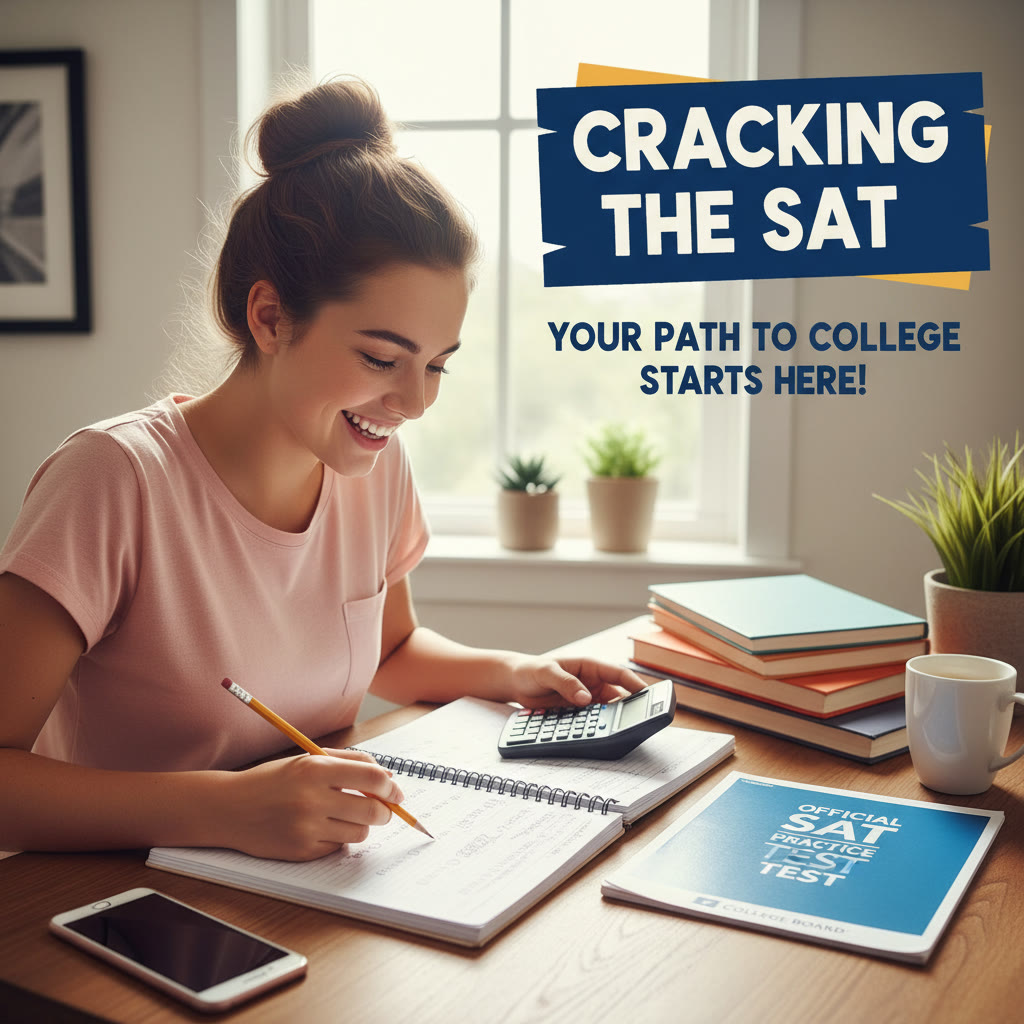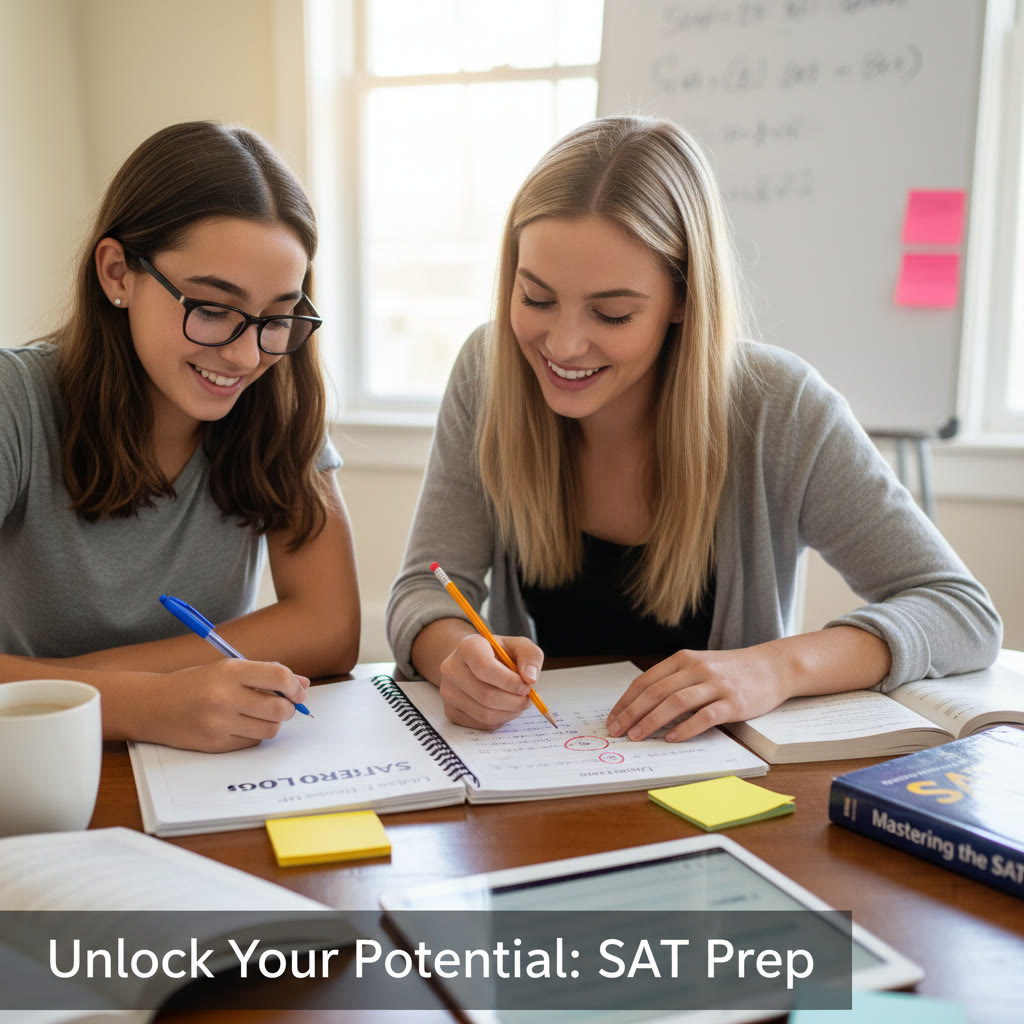The Importance of Full-Length SAT Practice Tests
When you’re preparing for the SAT, it’s tempting to focus on the flashiest tools: vocab apps, fancy question banks, or an intense weekend of math drills. Those are helpful, but they’re pieces of a larger puzzle. The part that most often separates a guess from a real, consistent score improvement is the simple practice of taking full-length, timed SAT practice tests. This isn’t about ego-checking or test-day jitters — it’s a training method that builds skills, habits, and insights you can’t replicate with single-section practice.
What do we mean by “full-length”?
A full-length SAT practice test simulates the structure and timing of the real exam: Reading, Writing and Language, Math No Calculator, and Math Calculator sections taken in order and under test-like conditions. That means you keep the same breaks, respect the timing rules, and commit to the whole three-hour experience. The goal isn’t just to answer questions; it’s to experience the cognitive and emotional demands of the SAT from start to finish.
Why they matter: five practical reasons
- Build stamina and focus. The SAT is long. Your brain tires, attention narrows, and careless mistakes creep in. Full-length tests train your ability to stay sharp for the entire duration.
- Master pacing. You learn how fast to move through each section. Timing is as much a skill as math or grammar knowledge.
- Reveal realistic weaknesses. Patterns that don’t show up in short practice sessions—like late-test fatigue or recurring question types that trip you up—become obvious.
- Improve strategy under pressure. Practice develops decision rules for guessing, skipping, and allocating time to tricky questions.
- Create a reliable baseline for progress. Repeated full tests let you see real growth over time, not just momentary gains on isolated question sets.
What a full-length practice test tells you about your preparation
Imagine you take a timed practice test and score 1150. That number is useful, but the test gives you much deeper data if you know what to look for. A careful review answers three big questions:
1. Where are errors happening?
Are mistakes concentrated in a single content area—like geometry problems in Math—or spread across reading passages? Do you slip on comma rules or sentence structure in the Writing section? Mark the exact question type so you can target study sessions later.
2. When do errors happen?
Track whether errors appear early, in the middle, or toward the end of sections. If you miss mostly at the end, fatigue and pacing are suspects. If mistakes are early, it could be careless reading or poor warm-up routines.
3. How much time did you spend per question?
Pacing metrics are concrete: Reading 52 questions in 65 minutes means about 75 seconds per question on average. Writing 44 questions in 35 minutes gives you about 47 seconds per question. Math’s 58 questions in 80 minutes average roughly 83 seconds per question, though no calculator problems (20 questions in 25 minutes) give about 75 seconds each, while calculator-permitted questions (38 in 55 minutes) give a touch more time. Measure how often you overshoot those averages and why.
How to simulate test-day conditions (and why it matters)
For practice tests to be diagnostic, they need to be realistic. That means more than timing—your environment, materials, and mindset should mirror the exam day as closely as possible.
Checklist for a realistic simulation
- Complete sections in order with the same breaks as the real test.
- Use only permitted materials: an approved calculator, pencil, and a watch (if allowed) for timing.
- Take the test in a quiet space with minimal distractions.
- Eat the same kind of breakfast and take the same pre-test routine you’ll use on the official day.
- Resist stopping the timer; if you must skip a problem, mark it and come back under real-time pressure.

When you replicate the conditions, you get valid data. If you practice in a noisy room with breaks whenever you feel like it, your scores will misrepresent how you’ll perform on test day.
How to review a practice test like a coach
Taking a practice test is only half the job. The real score improvements come from a thorough review process—think of this as your study surgery. You’ll want to diagnose, prescribe, and monitor.
Step-by-step review routine
- Score it properly. Use the official answer key. Convert raw scores to scaled scores using the conversion chart that comes with the practice test or the guidance your tutor provides.
- Create an error log. For every wrong answer write the question number, mistake type (content vs. careless vs. timing), and an action point (e.g., “review circle theorems,” “practice reading for main idea”).
- Group errors by type. Find clusters: are you consistently slipping on conditional probability in Math or on evidence questions in Reading?
- Design micro-lessons. For each cluster, build a focused study block — 20–40 minutes dedicated to the exact skill until you reach mastery-level comprehension.
- Retest in a targeted way. After focused practice, reattempt only the problem types that tripped you up, then return to another full-length test to validate improvement.
Example: turning one missed question into a strategic win
Say you missed three grammar questions because you misread modifiers. Don’t just re-do grammar worksheets ad infinitum. Instead, write a two-step drill: 15 minutes practicing modifier-placement problems with strict timing, then a set of mixed Writing questions to force retrieval under pressure. Add a simple cue—underline the subject and the modifier on every sentence—until the habit is automatic.
How many full-length tests should you take?
The right number depends on your timeline, starting point, and target score. But there’s a practical minimum and an effective ceiling.
Guidelines based on timeline
- Three months before exam: Take one full-length test every 1–2 weeks. That gives you time to diagnose and act on weaknesses between tests.
- One month before exam: Increase to one full-length test per week. This sharpens pacing and builds confidence.
- Two weeks before exam: One test every 5–7 days, with targeted review between tests.
- Final week: One dress-rehearsal test early in the week, then rest and light targeted practice. Avoid heavy testing within 48 hours of the official exam.
| Week | Full-Length Tests | Focus |
|---|---|---|
| Weeks 8–5 | 1 per 10–14 days | Identify weaknesses, begin targeted practice |
| Weeks 4–2 | 1 per week | Improve pacing, refine strategies, reinforce content |
| Week 1 | 1 or 2 (with rest) | Dress rehearsal, light review, mental prep |
This table gives a balanced plan for students aiming to steadily improve without burning out. The exact cadence should be personalized—some students benefit from more frequent tests if they have more time for review; others need slower spacing to absorb material.
What to do between practice tests
Too many students view tests as the end point. A smarter view is that tests are feedback engines: they tell you exactly where to spend your energy. Between tests, prioritize quality over quantity.
High-impact activities between tests
- Targeted mini-lessons. 20–40 minute focused sessions on the most common error types you logged.
- Timed sections. Run 25–65 minute timed blocks focusing on pacing and accuracy rather than raw volume.
- Active review and spaced repetition. Put tricky concepts back into a spaced schedule so you revisit them multiple times before the next test.
- Simulated stress practice. Practice under mild stressors (e.g., slightly noisy environment) to build resilience.
How Sparkl’s personalized tutoring fits in naturally
If you’ve been practicing on your own and feel stuck, personalized support can accelerate progress. Sparkl’s personalized tutoring offers one-on-one guidance, tailored study plans, expert tutors who can identify subtle error patterns, and AI-driven insights that help prioritize practice efficiently. When used sparingly and strategically—say, after your first three practice tests—personalized tutoring can turn the data from those tests into a targeted roadmap for improvement.

Common pitfalls and how full-length tests help you avoid them
- Ignoring stamina. Short practices can hide fatigue issues. Full tests show whether your accuracy drops in the last 20 minutes of Math.
- Misleading averages. A stellar score on a short quiz can create false confidence. Full tests average out the flukes.
- Poor pacing habits. Spending too long on one passage or problem becomes obvious only in a full test.
- Random review. Without diagnostics, students may waste time rehearsing already-mastered topics. Full tests help prioritize.
How to know your practice test progress is real
Real progress should be consistent, explainable, and transferable. That means your scores should climb over multiple tests, error types should shrink or change predictably, and your comfort during the test should increase. If your score jumps up and down wildly, focus less on the number and more on what’s changing beneath the surface.
Measures of meaningful progress
- Decreasing frequency of the same error types in your error log.
- Improved pacing metrics (fewer sections where you run out of time).
- Higher correct rate on previously troublesome question types during targeted practice.
- Greater mental resilience: fewer panic moments, smoother recovery from a bad passage.
Final test-day checklist
After months of full-length practice tests, your test day should feel like another rehearsal—one with higher stakes. Here’s a compact checklist to help you bring everything together:
- Get a full night’s sleep two nights before the test.
- Eat a balanced breakfast that combines protein and complex carbs.
- Bring an approved calculator, pencils, eraser, and acceptable photo ID.
- Arrive early to the testing center to minimize stress.
- Use breathing techniques during breaks to reset focus.
- Trust the pacing strategy you practiced during full tests—don’t improvise wildly on the morning of the exam.
Putting it all together: a short case study
Meet Maya, a student who started with a baseline score of 1180. She committed to an eight-week plan: one practice test every two weeks for the first month, then weekly tests for the next four weeks. After each test she created a targeted action plan: three 30-minute micro-lessons focusing on trigonometry, comma rules, and evidence-based reading strategies. She used timed sections twice a week and logged every mistake.
By week six she noticed fewer careless errors in Writing and that her math pacing had improved: she went from running out of time on the last 10 Math questions to finishing with 12 minutes left for review. Her full-length practice tests reflected this: a steady climb from 1180 to 1290. A short block of personalized sessions with a Sparkl tutor helped refine her reading strategies and build confidence going into the last month. On test day she felt calm, paced her time effectively, and matched her practice test performance.
Closing thoughts
Full-length SAT practice tests are not glamorous, but they are powerful. They reveal what practice drills can’t: how you perform under realistic conditions, where your stamina drops, and which strategies survive pressure. If you pair those tests with smart review—error logs, focused practice, spaced repetition—and invite targeted support when needed (like Sparkl’s personalized tutoring with 1-on-1 guidance, tailored study plans, expert tutors, and AI-driven insights), you’ll convert practice into predictable improvement.
Think of full-length practice tests as both mirror and roadmap: they reflect your current performance honestly and map the shortest route to the next level. Take them seriously, review them rigorously, and treat each one as a step toward the confident, prepared test day you want to have.
Ready to schedule your next practice test? Make it realistic, review it like a pro, and let your progress show up where it matters most—on test day.


















No Comments
Leave a comment Cancel